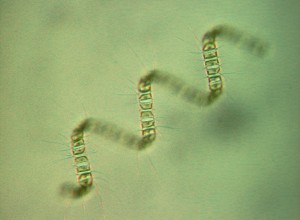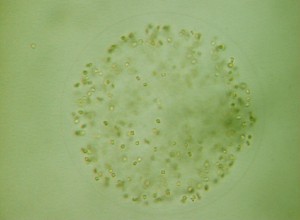The DMS-S NS project aims to quantify past, present and future dimethylsulfide (DMS) emissions to the atmosphere associated to the wax and wane of Phaeocystis blooms in the eutrophied Southern North Sea. Biological production of DMS in the ocean is the main natural source of tropospheric sulphur on a global scale with important consequence for the Earth radiative balance. Current knowledge shows that the net production of DMS is related to the dominant phytoplankton species and the associated food-web structure. Hence, DMS dynamics differs between ocean regions. Dimethylsulphonioproprionate (DMSP), the precursor of the DMS, is indeed synthesized by only a few classes of marine microalgae, among which Prymnesiophyceae with Phaeocystis sp as an important contributor. In the scope of the DMS-SNS project, DMSP/DMS field observations and targeted process studies will be conducted in the SNS to assess their present-day spatio-temporal distribution and investigate their controlling mechanisms. These data will be used to parameterize and validate a DMSP/DMS module that will be coupled to the existing ecological MIRO model developed for describing the dynamics of Phaeocystis-dominated ecosystems. Historical reconstruction and projections of DMS emissions in the SNS will be performed by forcing the MIRO-DMS model with existing RIVERSTRAHLER simulations of river nutrient loads to the area and for the 1950-2050 period.
NS project aims to quantify past, present and future dimethylsulfide (DMS) emissions to the atmosphere associated to the wax and wane of Phaeocystis blooms in the eutrophied Southern North Sea. Biological production of DMS in the ocean is the main natural source of tropospheric sulphur on a global scale with important consequence for the Earth radiative balance. Current knowledge shows that the net production of DMS is related to the dominant phytoplankton species and the associated food-web structure. Hence, DMS dynamics differs between ocean regions. Dimethylsulphonioproprionate (DMSP), the precursor of the DMS, is indeed synthesized by only a few classes of marine microalgae, among which Prymnesiophyceae with Phaeocystis sp as an important contributor. In the scope of the DMS-SNS project, DMSP/DMS field observations and targeted process studies will be conducted in the SNS to assess their present-day spatio-temporal distribution and investigate their controlling mechanisms. These data will be used to parameterize and validate a DMSP/DMS module that will be coupled to the existing ecological MIRO model developed for describing the dynamics of Phaeocystis-dominated ecosystems. Historical reconstruction and projections of DMS emissions in the SNS will be performed by forcing the MIRO-DMS model with existing RIVERSTRAHLER simulations of river nutrient loads to the area and for the 1950-2050 period.
DMS-SNS partners: ESA-ULB (Gypens, N., Lancelot, C), Chemical Oceanography Unit-ULg (Borges, A.V.)
Period of the study: January 2011- December 2014.
Financial support: FNRS – Fonds de la Recherche Scientifique (Belgium)
ESA members participating to DYNAMO: Gypens, N., Lancelot, C., Speeckaert, G.
